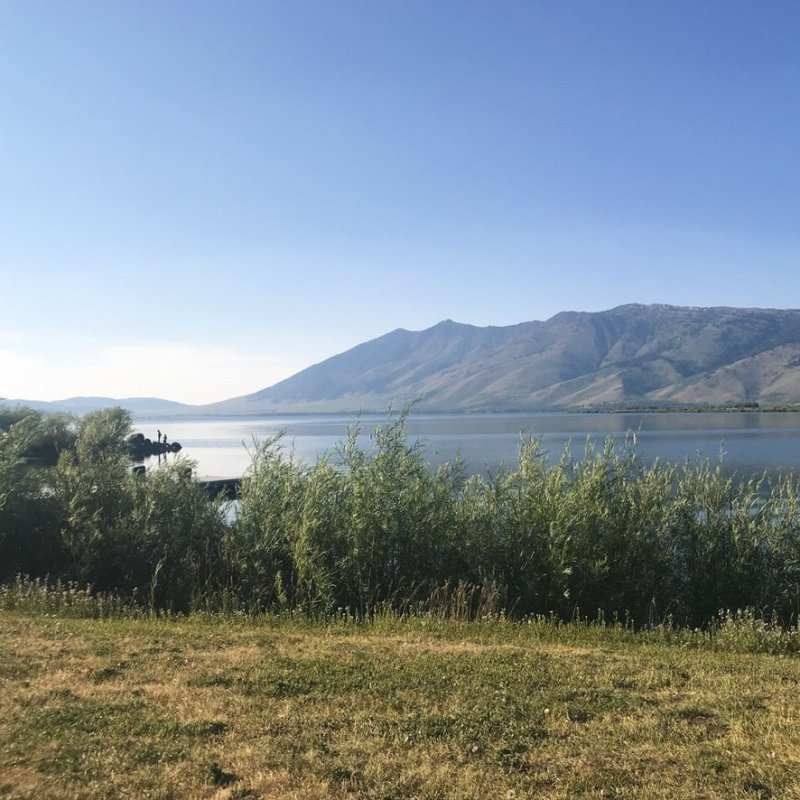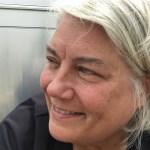
Robyne Stevenson
The first time I drove through Idaho, I went from south to north and was mesmerized by the changing landscapes. There are tumbleweeds and desert sand in the south, and as you go north you cross mountainous terrain. The far north is alpine country, which is breathtaking.
Videos by TravelAwaits
Many people enjoy the winter ski season in Idaho and even camp in their RVs to do it. Summer and fall, however, are golden times for fishing, hiking, and enjoying a campfire by a lake or river in one of the 27 Idaho state parks. I’ve enjoyed camping in Idaho and look forward to many more visits.

1. Bear Lake State Park: The Crown Jewel
What could be better than a huge lake that is 20 miles long by 8 miles wide with views of the Cache mountain range? Most water enthusiasts would say there is no better place than Bear Lake State Park. Tucked away in the far southeast corner of Idaho sits this magnificent lake, half of which extends across the border into Utah. Tens of thousands of visitors come all year long to visit the turquoise waters and fish, swim, and boat in the summer and icefish in the winter. There are 47 electric RV sites (currently $35 per night) and the campground is lakeside with direct lake views. You’ll be steps away from the sandy shores. There is a separate loop for tent campers. No wonder they call this place the “Caribbean of the Rockies.”
If you get tired of hanging out at the lake, make a day trip to Minnetonka Cave, just west of Bear Lake in St. Charles Canyon. This cave sits near the Porcupine Campground and is maintained by the USDA Forest Service. You’ll be deep in the forest and hike a lot of stairs and some slippery terrain with your tour guide. Bring a jacket as the cave is a constant 40 degrees. There is plenty of wildlife to be seen in the area including moose.

Robyne Stevenson
2. Bruneau Dunes State Park
Also at the southern end of the state, one hour south of Boise is the Bruneau Dunes State Park. It’s out of the way and quite a unique place. It hosts the largest free-standing sand dunes in North America topping out at 470 feet. The Colorado sand dunes top out at 700 feet, but they are not free-standing in that they side up to a mountain range. Regardless of which is the tallest, the Idaho dunes are a lot of fun and easily accessible. For $15 per day, you can rent a sandboard and ride it down the dunes (except in summer when the sand is too hot). Of course, you have to climb to the top to use the board (no trails or boardwalks). If sand dune boarding is not for you, then try fishing in the two small lakes that are on park property. There is a fishing rod loaner program at the park. Fishing licenses are required — $11.50 for a day pass or $30.50 for an annual license. If you bring your own equipment, the Snake River is just a few miles away. Or try a spot at the nearby Idaho Power Cottonwood Campground on an offshoot of the CJ Strike Reservoir for the Snake River. You can use the park for the day and head back to Brueneu to camp. Or try one of their 31 water-only campsites.
There are two campgrounds at Bruneau with 80 electric/water sites. The elevated, Broken Wheel loop has a view of the dunes under cottonwood trees. It’s the only shady place in this desert-terrain park. The Eagle Cove loop is next to the lakes at the base of the dunes. Fees are $26 to $29 per night. If you want to bring your horses, you can tent-camp in the equestrian loop.

Robyne Stevenson
There is plenty of hiking in the park. A six-mile trail takes you to the top of the large dune, an arduous climb, and back down around the lake, through the wetlands, and back to the visitor center. Shorter and less strenuous hikes at the lake are available (1.2 miles around the lake), and you can drive and park at the lake area and use the picnic tables while you are there. If you are camping on the weekend, go to the park observatory where large telescopes are available to view the stars from April to October (a small event fee is required).
Wildlife is present in the park, though it is not considered bear country. Coyotes are sure to be heard at night, deer and raccoons are present in the campgrounds, and there are plenty of birds to view as well. The temperate climate in this park means camping is available year-round. Despite its desert terrain, hills and mountains are within eyesight enveloping this very unique park.

Robyne Stevenson
3. Henrys Lake State Park
Henrys Lake State Park is on the Idaho/Montana border and is about 16 miles from West Yellowstone, Montana, which sits next to Yellowstone National Park. Henrys Lake is a perfect base camp for exploring Yellowstone but offers its own unique setting. This 6,000-acre alpine lake sits at an elevation of 6,476 feet. The campground sits on the lake with spectacular sunset views and light bouncing off the nearby mountains. Fishing is the main attraction at this park with renowned trout fishing on the lake. You can fish from the pier or shore with a loaner rod if you don’t bring your own. If you want to go fishing on the lake, you must bring your own boat and registration is required. There are boat inspection sites on all roads in Idaho, so be prepared with your paperwork. Unfortunately, even though this lake is beautiful, leeches prevent it from being a fully enjoyable swimming lake.
The surrounding area is filled with trees and mountains though the park itself is flat and open. There are asphalt roads and wide trails near the campground. The park has several miles of hiking trails that go up into the aspen forest. The shortest loop is 1.39 miles and skirts the base of the forest. Another 1-mile loop goes through the forest. For those who want a view, take the half-mile Overlook View trail out of the forest. This is bear country, so be on the lookout and carry
Sitting by the lake, you’ll see an amazing array of birds. White trumpeter swans can be seen and heard on the lake along with plenty of ducks and gulls. Eagles, hawks, and osprey are plentiful. The shoreline area sports cranes and herons that migrate there in the summer. See our best binocular picks for any budget here are a valuable item if birding is to be part of your fun.
Editor’s Note: See our best binocular picks for any budget here.

Robyne Stevenson
4. Farragut State Park
No visit to Idaho is complete without a visit to the northern tip of the state where alpine lakes and forests beckon. Farragut State Park is an interesting place for all sorts of outdoor activity year-round. It sits on what was once a World War II base and there are remnants and a museum in the park commemorating this. The campground has over 200 RV camping spots — some with full hook-ups. There is a dump station on site. Tent campers and equestrian campers are accommodated in separate campground loops.
Farragut is truly a year-round park. In the summer there are all the activities you would expect being on Lake Pend Oreille with swimming, fishing, boating, and canoeing. There are 40 miles of summer hiking trails including an ADA trail, where you will spot lots of wildlife. Or take on the mini-disc golf course. You’ll also find a remote-controlled airplane field. In the fall, the park is open for licensed hunters. In winter there are groomed trails for cross-country skiing and snowshoeing, as well as ski runs.
You will want to make a day trip to Lake Coeur d’Alene, which is only 25 miles south. The lake is breathtaking in its beauty. You can hike, bike, walk, or sit and admire it from the 5.7 miles of paved trails on the lakeshore at the Coeur d’Alene Parkway day-use area. It’s conveniently located at the eastern edge of the lake. Start at the town of Coeur d’Alene and drive southeast on East Coeur d’Alene Lake Drive for spectacular scenery.
These four parks barely scratch the surface of the wilderness wonderland that is Idaho. Fly fishing on the Snake River is not to be missed whether you are a confirmed enthusiast or simply want to sit on the banks. With mountains everywhere, it is a visual delight to be in Idaho. For more Gem State inspiration, consider:
